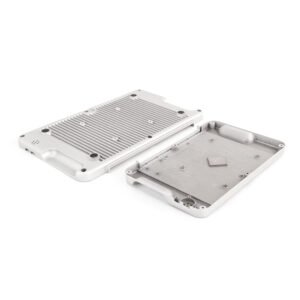Aluminum alloy die casting
Home » Aluminum alloy die casting
Why choose Honjenny?
1.28+ Years Experience
With over 28 years in the industry, Honjenny has honed its skills in producing high-quality die-cast products, ensuring precision and durability. Our expertise in zinc and aluminum alloys makes us a trusted partner for your die-casting needs
2.One-stop Solution
At Honjenny, we understand that each project is unique. We offer tailored solutions, from product design and material selection to surface finishing, ensuring that your products are not only functional but also aesthetically pleasing and durable.
3.Advanced Equipment
We operate with 15 production lines and state-of-the-art equipment, enabling us to meet high-volume demands without compromising on quality. Our team is skilled in advanced die-casting techniques, ensuring the best results for every project.
4.Professional Team
Professional engineers review die castings and machined parts for each project and provide DFM reports. We can help reduce costs, avoid high modification fees at later stages, and minimize defects and defect rates.
Advanced Equipment

CNC machining centre (6.5m lengths)
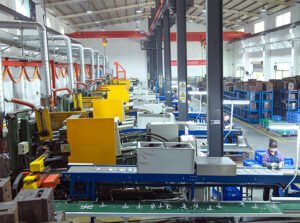
Automatic die-casting equipment
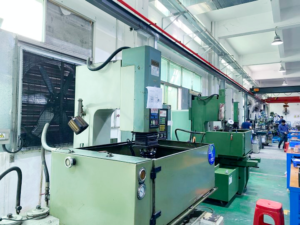
EDM

Wire Cut Machine
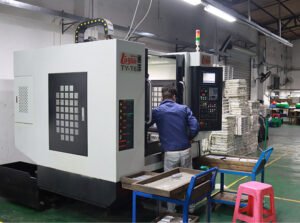
4-axis machining centres
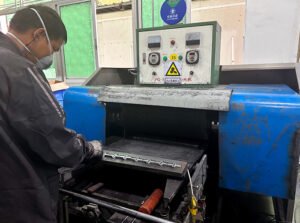
Automatic grinding
Die Casting Quality Assurance
Our products always adhere to high standards of quality assurance. From the selection of raw materials to every link in the production process, we strictly follow the international quality management system to ensure that each product can stand the test of the market. Through multiple quality tests and strict process control, we are committed to providing customers with high-end, durable and safe products. Your satisfaction is our unremitting goal!
Aluminum alloy Die Casting Products
FAQ
What are the production processes of aluminum alloy die castings?
Design: Design the mold according to product requirements to ensure accuracy and surface quality.
Manufacturing: Use high-quality steel for mold processing, usually using CNC processing technology.
Raw material preparation: Select suitable aluminum alloy materials, such as A380, A383, etc.
Melting: Heat the aluminum alloy to melt in a high-temperature furnace, usually at a temperature of 700-750°C.
Injection: Inject the molten aluminum alloy into the mold through a die casting machine. Common die casting methods include hot chamber die casting and cold chamber die casting.
Cooling: Cool and solidify in the mold to form an aluminum alloy die casting.
Take out the casting: Open the mold after cooling and take out the aluminum alloy die casting.
Finishing: Remove burrs, flash and other defects on castings.
Surface treatment: Perform surface treatment such as spraying, anodizing, and electroplating to improve appearance and corrosion resistance.
Testing: Perform quality inspection on aluminum alloy die castings in terms of size, strength, surface defects, etc. to ensure that the products meet the standards.
Packaging: Pack qualified aluminum alloy die castings and prepare them for delivery.
Key technologies
Temperature control: Temperature control during melting and injection is crucial to the quality of castings.
Mold maintenance: Regularly maintain the mold to ensure its service life and casting accuracy.
What are the post-processing processes for aluminum alloy die castings?
Mechanical deburring: Remove flash, burrs and parting lines through mechanical methods such as vibration grinding, drum polishing, grinding wheels, grinders, etc.
Chemical deburring: Use chemical agents to dissolve burrs, suitable for workpieces with complex shapes.
Sandblasting/shot blasting: Clean surface oxides and impurities through high-speed sand or steel shots, while improving surface roughness.
Aging treatment: Improve the mechanical strength and hardness of aluminum alloys.
Solution treatment: Heat the aluminum alloy to a specific temperature for a period of time, and then cool it quickly to enhance the material properties.
Polishing: Make the surface bright and smooth, including mechanical polishing, electrolytic polishing and chemical polishing.
Anodizing: Form a dense oxide film on the surface to enhance corrosion resistance, wear resistance and appearance.
Powder Coating/Painting: Provide color and protective layer, such as electrostatic powder coating, liquid spray painting, etc.
Electroplating: Apply a layer of metal (such as nickel, chromium) to enhance corrosion resistance and decorative effects.
Brushing: Create a textured stripe effect to enhance decorativeness.
CNC machining: Perform secondary precision machining on key parts to achieve high-precision dimensional requirements.
Drilling and tapping: Perform threading or drilling on aluminum alloy die castings.
Sealing: Usually used for post-anodizing treatment to prevent pore penetration and increase corrosion resistance.
Anti-rust treatment: Apply anti-rust oil or perform special chemical treatment to increase corrosion resistance.
Dimension inspection: ensure that the dimensional accuracy after processing meets the design requirements.
Surface inspection: inspect surface finish, coating uniformity and color difference.
Performance testing: including hardness, strength, corrosion resistance testing, etc.
The specific post-processing processes used depend on the purpose of aluminum alloy die castings, customer requirements, cost control and other factors.
Market Segmentation and Market Trends of Aluminum Die Castings, Future Trends, and Development
Aluminum die castings play a pivotal role in a wide range of industries, from automotive and aerospace to electronics and consumer goods. With the rapid advancement of technology and increasing demand for lightweight, durable components, the aluminum die casting market is witnessing significant growth. In this article, I will delve into the market segmentation, current trends, and future development of aluminum die castings, providing valuable insights for industry professionals and potential buyers.
Problem-Agitate-Solve (PAS) Formula
- Problem:Many businesses struggle to find reliable and high-quality aluminum die casting solutions that meet evolving market demands.
- Agitate:Without understanding the market trends and segmentation, you might miss critical opportunities or choose suboptimal suppliers.
- Solve:I will guide you through the market segmentation and trends, helping you make informed decisions and stay ahead in the industry.
The aluminum die casting market is segmented into automotive, industrial, consumer electronics, aerospace, and other industries, with automotive being the dominant sector due to the increasing demand for lightweight and high-performance components.
Curious about how each segment is performing and where the market is heading? Let’s dive deeper!
What are the key market segments for aluminum die castings?
The aluminum die casting market is broadly segmented based on application, end-use industry, and geography. Key segments include:
- By Application:Engine parts, structural components, housings, and decorative elements.
- By Industry:Automotive, aerospace, industrial machinery, electronics, and construction.
- By Geography:North America, Europe, Asia-Pacific, Latin America, and the Middle East & Africa.
What are the current market trends for aluminum die castings?
- Lightweighting in Automotive:As automotive manufacturers strive to meet stringent emission norms, aluminum die castings are gaining traction for their lightweight and strength.
- Sustainability Initiatives:The use of recycled aluminum in die casting is increasing, contributing to a circular economy.
- Technological Advancements:Innovations in die casting processes, such as vacuum die casting and squeeze casting, enhance product quality and efficiency.
- Growing Demand in Electronics:The rise of electric vehicles (EVs) and consumer electronics boosts demand for aluminum die cast components.
What are the future trends and development opportunities in the aluminum die casting industry?
- Electric Vehicle Boom:The EV market will drive demand for lightweight components, benefiting the aluminum die casting sector.
- Increased Automation:Smart manufacturing and Industry 4.0 will enhance production efficiency and quality control.
- Expansion in Emerging Markets:Asia-Pacific, particularly China and India, will witness robust growth in aluminum die casting applications.
- Custom Solutions and OEM Partnerships:Providing tailored solutions and collaborating with Original Equipment Manufacturers (OEMs) will open new business avenues.
Conclusion and Call to Action:
The aluminum die casting market is evolving rapidly, with promising growth opportunities across various industries. Staying informed about market segmentation and trends can help you make strategic decisions. If you’re looking for top-quality aluminum die casting products or need guidance on your next project, don’t hesitate to contact Honjenny.
Die Casting Manufacturers: The Ultimate Guide to Choosing the Best Partner
Introduction Modern production depends on die casting manufacturers quite definitely....
Read MoreWhat Are the Advantages of Using Zinc Die Cast in Manufacturing?
Introduction Modern manufacturing makes extensive use of the very efficient...
Read MoreDifferences between Zinc Alloy Die Casting and Deformation
Introduction Modern production depends much on zinc alloy die casting....
Read MoreKey Factors to Consider When Choosing a Die Casting Factory for Your Manufacturing Needs
Introduction Selecting the correct die casting facility is essential in...
Read MoreGet Immediate One-On-One Service
Welcome Friends And Customers At Home And Abroad To Cooperate Sincerely And Create Brilliance Together!




